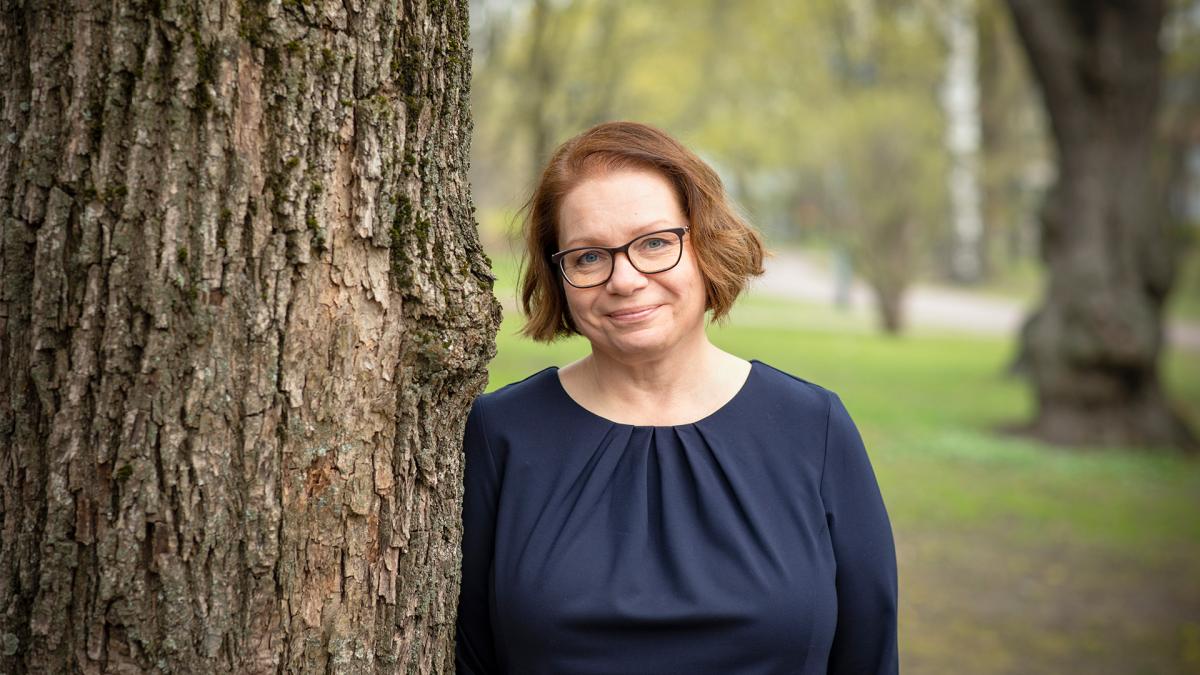Why are we unable to utilise the power of art as a driver of change?
Companies and political decision-makers hesitate around artists and artistic thinking, even though radical perspectives are needed more than ever, writes vice rector Marjo Kaartinen.

In recent years, it has been trendy to talk about foresight work. We strive to understand megatrends, create visions of the future, anticipate what will be happening in the world, and shape our own activities to be future-proof. Sitra recently published its Megatrends 2023 report, the aim of which, in the words of the authors, is to strengthen the future-oriented thinking of people and organisations and expand the group of people in positions of power over the future in post-normal time.
‘Power over the future’ is an excellent concept, as we are not mere passive recipients of the future. In addition to adapting to changes, it is essential to consider what kind of future we ourselves want to actively be building. I claim imagining the future to be one of the most essential skills if we wish to reform society. And that is not only a task for futurologists or people in power. As citizens, employees, influencers, and decision-makers, we can all hold power over the future.
Imagining the future requires not only an understanding of the various drivers of change, but also creative and even radical perspectives on how to see and do things differently. The sustainability gap affecting Finland’s competitiveness and the Finnish welfare state cannot be solved if we remain prisoners of our past or present ideas. We need to urgently find a path towards the new desired future, and it can only be found by questioning the present.
Art nourishes imagination and change
We are at present unable to utilise the power of art as a driver of change in nourishing new ways of thinking. Art is fundamentally about not repeating the old, but creating something new. Looking at things differently is at art’s very core; it asks us questions that would not otherwise be asked. That is why art challenges us to rethink things. At best, art tilts our thinking towards something positive.
The economic life, social actors and innovators are all in desperate need of different perspectives. Companies have customarily acquired art on their walls – would it not be time to invest in artistic thinking as well? Artistic thinking is scarcely utilised in business life, even though an artist as a colleague could tune the views of an expert of another field onto a new course, and vice versa. In this context, we are underutilising the instrumental value of art and losing its huge potential to promote thinking.
We also often forget that the benefits of art do not stem only from the works of the most celebrated artists. Even if you play your instrument poorly or write poems only for your own pleasure, the power of making art can still be enormous and produce experiences that open up worlds. Several studies have shown that making art not only nourishes creativity, but also promotes health and actual wellbeing. And that is precisely what we as people need in order to enable new ways of thinking to grow.
The significance of art in leading us towards the future is not understood
As a historian, I recognise the change: people in power in the past understood the value of art better than those in power today. In our modern society, art is compartmentalised as a status symbol or a non-essential hobby. We have lost our understanding of how powerful an instrument art is, and the significance of art in leading us towards the future is not understood. It feels like those in power do not even want to see the power of art. However, through history, we can see the central role that art has always played in the lives of communities. The ancient rock paintings would never have been made should they not have held any significance to the community.
Art has always played a central role in ruling and governing, for good and bad. Indeed, art has also been used effectively for propaganda. In the 16th century, Pope Leo X commissioned works from Raphael where he presented events from hundreds of years earlier as his own in order to demonstrate the past, present, and future greatness of papal power. In the 1970s, graphic designer Erik Bruun’s work ‘Saimaannorppa’, Saimaa Ringed Seal, became the symbol of nature conservation – and it has served that purpose to this day.
I extend a challenge to the decision-makers, in both companies and the society: what kind of story will be told about art as a reformer of thinking and our leader to the future when we one day look back at the 2020s?
Marjo Kaartinen
Vice rector, University of the Arts Helsinki
The text was originally published as an opinion piece on Talouselämä.